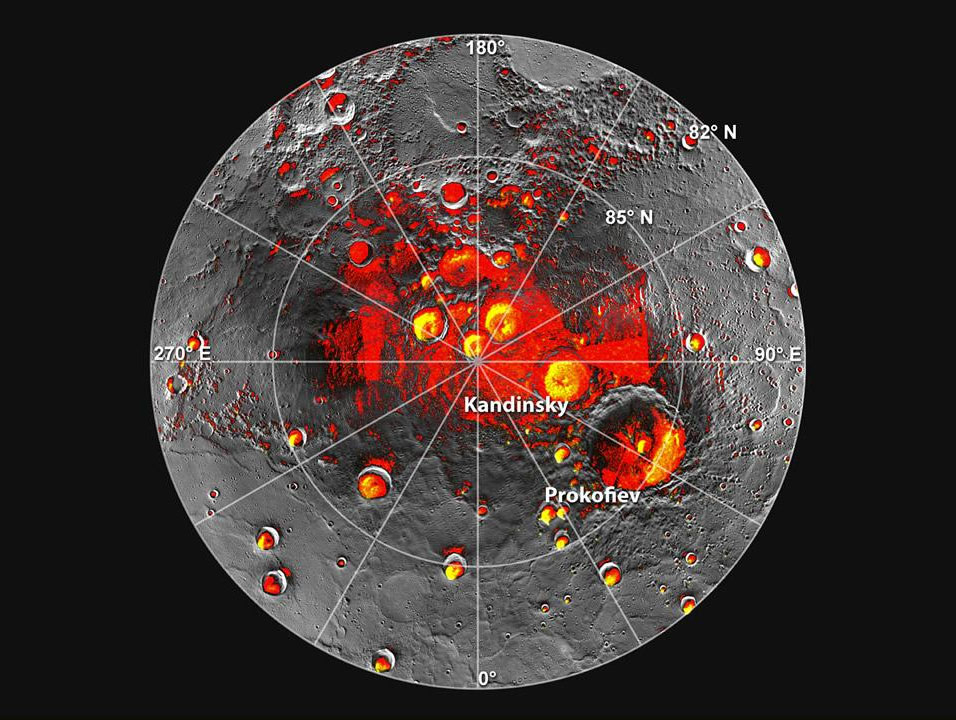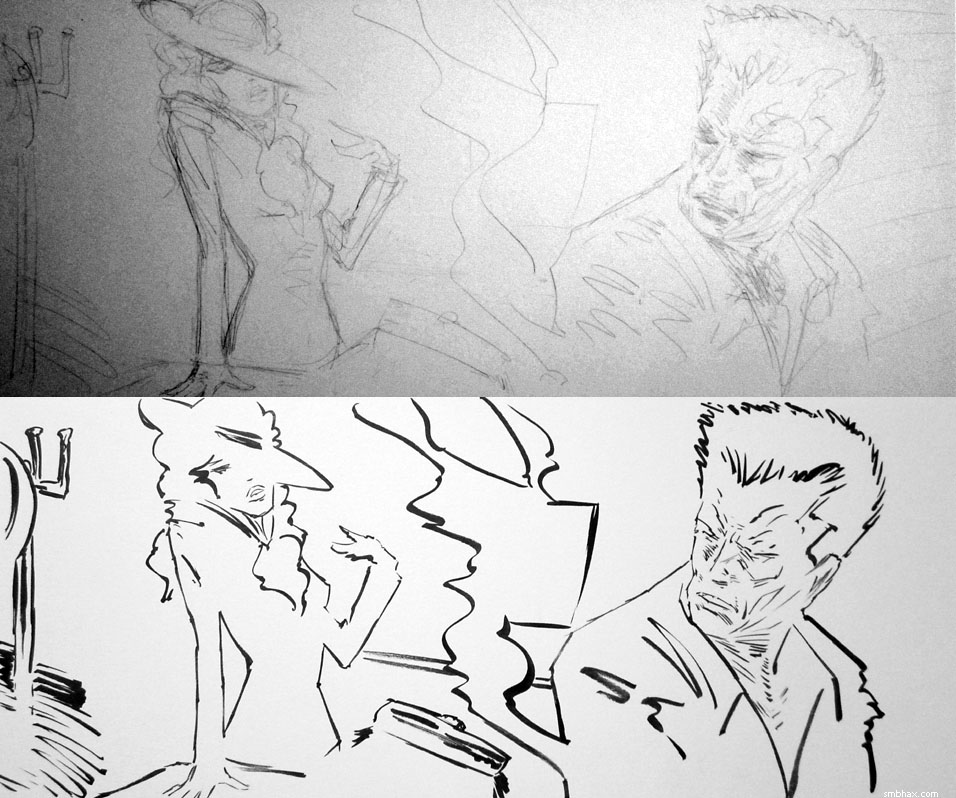Added 1 new A* page:The big news today was NASA's announcement that their MESSENGER probe has found pretty convincing evidence for the presence of water ice on Mercury. Initially this may sound surprising, given that the planet closest to the Sun can boast daylight surface temperatures of 800 degrees Farenheit, but without an atmosphere it can get down to below -300 F in the shade, and, much like on the Moon, there are shadowy crater areas at the poles of Mercury into which the Sun never reaches. MESSENGER scanned those areas with laser pulses (to create accurate 3D maps of the terrain), measured infrared reflections from them, and checked their composition using neutron spectroscopy, all of which told them that these low crater interiors near the poles have shiny spots and high hydrogen content, which almost certainly indicated the presence of water ice:

image by NASA/Johns Hopkins University Applied Physics Laboratory/Carnegie Institution of Washington/National Astronomy and Ionosphere Center, Arecibo Observatory (source)
On other worlds--like Mars and the Moon--the presence of water ice is interesting as it raises the possibilities of alien life on the planet, and human colonization; in Mercury's severe environment both would still be pretty iffy, I guess. Still, it's a start!
That neutron spectroscopy technique was used in 1998 by the Lunar Prospector to help find water ice on the poles of the Moon. It involves collecting and measuring neutrons and gamma rays coming from the target, in this case craters on Mercury's poles. The neutrons and gamma rays are released from the surface by energetic cosmic ray impacts; since different elements emit gamma rays of different energy levels, their wavelength and number can indicate the presence and abundance of particular elements: in this case, gamma rays of the wavelength emitted by hydrogen were detected coming from those craters in fairly large numbers. And since free neutrons lose more energy and speed when they collide with smaller atomic nuclei than they do when they collide with larger atomic nuclei, the relatively low speed of incoming neutrons also indicates that they were bouncing off very light atoms--and hydrogen, abundant in water ice, is the lightest you can get.
So there you go! Large patches of this probable water ice are covered by a darker, less reflective substance, and it is thought that this is likely to be organic material deposited there by asteroids and comets--which would also be the likely source of the water ice itself.
~~~~~~~
Some stages in the drawing of today's A* page:

It was fun to get a bit loose with the overall composition--that also seems to help open up possibilities for making an interesting mix of black and white areas when it comes to inking the thing. Also I'm having way more fun drawing the Major than I thought I would. :)
|
